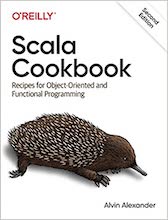The LearningFactorFunctionFactory.java Java example source code
/*
* Licensed to the Apache Software Foundation (ASF) under one or more
* contributor license agreements. See the NOTICE file distributed with
* this work for additional information regarding copyright ownership.
* The ASF licenses this file to You under the Apache License, Version 2.0
* (the "License"); you may not use this file except in compliance with
* the License. You may obtain a copy of the License at
*
* http://www.apache.org/licenses/LICENSE-2.0
*
* Unless required by applicable law or agreed to in writing, software
* distributed under the License is distributed on an "AS IS" BASIS,
* WITHOUT WARRANTIES OR CONDITIONS OF ANY KIND, either express or implied.
* See the License for the specific language governing permissions and
* limitations under the License.
*/
package org.apache.commons.math3.ml.neuralnet.sofm;
import org.apache.commons.math3.ml.neuralnet.sofm.util.ExponentialDecayFunction;
import org.apache.commons.math3.ml.neuralnet.sofm.util.QuasiSigmoidDecayFunction;
import org.apache.commons.math3.exception.OutOfRangeException;
/**
* Factory for creating instances of {@link LearningFactorFunction}.
*
* @since 3.3
*/
public class LearningFactorFunctionFactory {
/** Class contains only static methods. */
private LearningFactorFunctionFactory() {}
/**
* Creates an exponential decay {@link LearningFactorFunction function}.
* It will compute <code>a e-x / b,
* where {@code x} is the (integer) independent variable and
* <ul>
* <li>a = initValue
* <li>b = -numCall / ln(valueAtNumCall / initValue)
* </ul>
*
* @param initValue Initial value, i.e.
* {@link LearningFactorFunction#value(long) value(0)}.
* @param valueAtNumCall Value of the function at {@code numCall}.
* @param numCall Argument for which the function returns
* {@code valueAtNumCall}.
* @return the learning factor function.
* @throws org.apache.commons.math3.exception.OutOfRangeException
* if {@code initValue <= 0} or {@code initValue > 1}.
* @throws org.apache.commons.math3.exception.NotStrictlyPositiveException
* if {@code valueAtNumCall <= 0}.
* @throws org.apache.commons.math3.exception.NumberIsTooLargeException
* if {@code valueAtNumCall >= initValue}.
* @throws org.apache.commons.math3.exception.NotStrictlyPositiveException
* if {@code numCall <= 0}.
*/
public static LearningFactorFunction exponentialDecay(final double initValue,
final double valueAtNumCall,
final long numCall) {
if (initValue <= 0 ||
initValue > 1) {
throw new OutOfRangeException(initValue, 0, 1);
}
return new LearningFactorFunction() {
/** DecayFunction. */
private final ExponentialDecayFunction decay
= new ExponentialDecayFunction(initValue, valueAtNumCall, numCall);
/** {@inheritDoc} */
public double value(long n) {
return decay.value(n);
}
};
}
/**
* Creates an sigmoid-like {@code LearningFactorFunction function}.
* The function {@code f} will have the following properties:
* <ul>
* <li>{@code f(0) = initValue}
* <li>{@code numCall} is the inflexion point
* <li>{@code slope = f'(numCall)}
* </ul>
*
* @param initValue Initial value, i.e.
* {@link LearningFactorFunction#value(long) value(0)}.
* @param slope Value of the function derivative at {@code numCall}.
* @param numCall Inflexion point.
* @return the learning factor function.
* @throws org.apache.commons.math3.exception.OutOfRangeException
* if {@code initValue <= 0} or {@code initValue > 1}.
* @throws org.apache.commons.math3.exception.NumberIsTooLargeException
* if {@code slope >= 0}.
* @throws org.apache.commons.math3.exception.NotStrictlyPositiveException
* if {@code numCall <= 0}.
*/
public static LearningFactorFunction quasiSigmoidDecay(final double initValue,
final double slope,
final long numCall) {
if (initValue <= 0 ||
initValue > 1) {
throw new OutOfRangeException(initValue, 0, 1);
}
return new LearningFactorFunction() {
/** DecayFunction. */
private final QuasiSigmoidDecayFunction decay
= new QuasiSigmoidDecayFunction(initValue, slope, numCall);
/** {@inheritDoc} */
public double value(long n) {
return decay.value(n);
}
};
}
}
Other Java examples (source code examples)
Here is a short list of links related to this Java LearningFactorFunctionFactory.java source code file:
 The search page
The search page Other Java source code examples at this package level
Other Java source code examples at this package level Click here to learn more about this project
Click here to learn more about this project
